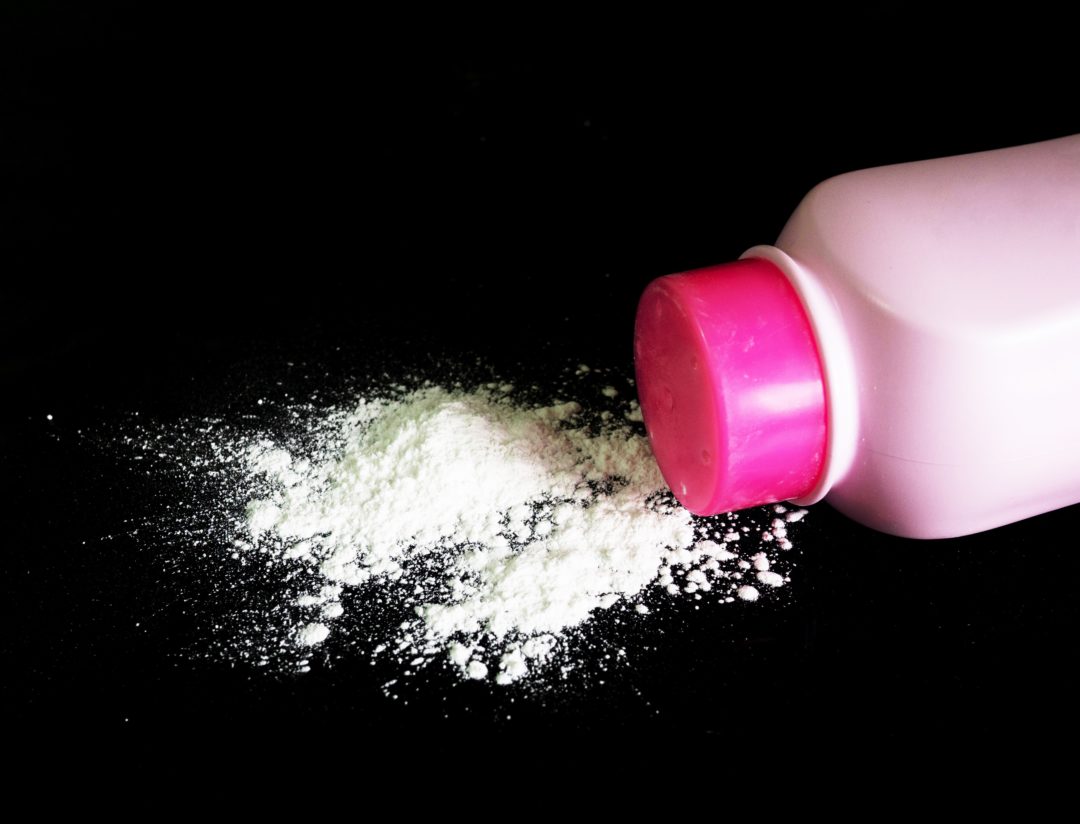
Johnson & Johnson Knew About Contaminated Talcum Powder

There are now, Reuters says, around 11,700 plaintiffs alleging that the company’s baby powder caused their cancers. J&J has been compelled to share company memos, internal reports, and other confidential documents with the plaintiffs’ lawyers.
Reuters was allowed to examine those documents, which showed that from at least 1971 to the early 2000s, the company’s raw talc and finished powders sometimes tested positive for small amounts of asbestos, and that company executives, mine managers, scientists, doctors, and lawyers fretted over the problem and how to address it, while failing to disclose it to regulators or the public.
The documents also track successful efforts to influence U.S. regulators’ plans to limit asbestos in cosmetic talc products and scientific research on the health effects of talc, according to Reuters.
The earliest mentions of tainted talc that Reuters found come from reports by a consulting lab written up in 1957 and 1958, which describe talc contaminated with the fibrous form of tremolite, one of six minerals recognized as asbestos. From then up to the early 2000s, various reports by scientists at J&J, outside labs, and J&J’s supplier got similar results, either identifying contaminants directly as asbestos or describing the contaminants as “fiberform” or “rods,” descriptors typically applied to asbestos.
In 1976, Reuters reported, the FDA was weighing limits on asbestos in cosmetic talc products. J&J assured the FDA that no asbestos was “detected in any sample” of talc produced between December 1972 and October 1973, in spite of the fact that at least three tests by three different labs from 1972 to 1975 had found asbestos in its talc, reported in one case at “rather high” levels.
Most internal asbestos test reports Reuters reviewed did not find asbestos. That said, J&J's tests have always had limitations that allow trace contaminants to go undetected, and only a tiny fraction of the company’s talc is tested. Besides which, Reuters points out, the World Health Organization recognizes no safe level of exposure to asbestos. For some, even small amounts of asbestos are enough to trigger the disease years later.
J&J maintains that its talc is safe, Reuters says, as shown for years by the best tests available, and that the information it has been required to divulge shows the care the company takes to ensure its products are asbestos free.
Ernie Knewitz, J&J’s VP of global media relations, told Reuters that “Plaintiffs’ attorneys out for personal financial gain are distorting historical documents and intentionally creating confusion in the courtroom and in the media. This is all a calculated attempt to distract from the fact that thousands of independent tests prove our talc does not contain asbestos or cause cancer. Any suggestion that Johnson & Johnson knew or hid information about the safety of talc is false.”
J&J’s litigation counsel, Peter Bicks, told Reuters that their findings were “false and misleading,” and that “The scientific consensus is that the talc used in talc-based body powders does not cause cancer, regardless of what is in that talc. This is true even if—and it does not—Johnson & Johnson’s cosmetic talc had ever contained minute, undetectable amounts of asbestos.” He dismissed the tests cited by Reuters as “outlier” results.
In court, Reuters reports, J&J lawyers told jurors that contaminated talc was intended for industrial use, and that some records referred to non-asbestos forms of the same minerals that their experts say are harmless.
One lab hired by a plaintiff, says Reuters, found asbestos in Shower to Shower talc from the 1990s. Another lab found asbestos in more than half of multiple samples of Baby Powder from past decades, in bottles from plaintiffs’ cupboards and from eBay, and from a 1978 bottle in J&J’s corporate museum. The lab report said that asbestos occurred in concentrations great enough that users “would have, more likely than not, been exposed.”
Reuters also points out a crucial aspect of asbestos poisoning: it has a long latency period. Diagnosis usually comes upwards of 20 years or longer for mesothelioma. Even if J&J talc products today are safe, the talc at issue in thousands of lawsuits was sold and used over the past 60 years.
TheChicago Tribune reportedin August of last year that J&J was ordered to pay $417 million to a woman who claimed that the talc in their baby powder caused her ovarian cancer.
In April, Bloomberg reported,J&J and Imerys, a talc mining company, were ordered to pay $80 million in punitive damages for hiding that their talc products had been tainted by asbestos.
In July, theNew York Times reportedthat J&J was ordered to pay $4.69 billion to 22 women and their families who had claimed that asbestos in J&J’s talcum powder products had caused them to develop ovarian cancer.
Read the full Reuters Investigation, written by Lisa Girion,here.

The editorial team at WholeFoods Magazine has decades of experiences reporting on natural products industry news, trends, and more. This national, monthly business-to-business magazine has been published continuously for nearly 40 years (the magazine was founded in 1977, and has been owned by Wainer Finest Communications since 1984). It is the longest-tenured media outlet of its kind in the natural products industry. The editorial focus at WholeFoods Magazine is, and always has been, on informing and educating members of the natural products industry.
The Magazine
Information
About Us
NOTE: WholeFoods Magazine is a business-to-business publication. Information on this site should not be considered medical advice or a way to diagnose or treat any disease or illness. Always seek the advice of a medical professional before making lifestyle changes, including taking a dietary supplement. The opinions expressed by contributors and experts quoted in articles are not necessarily those of the publisher or editors of WholeFoods.







